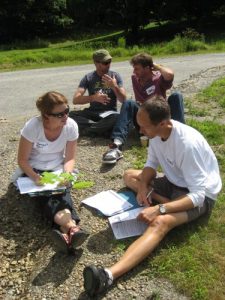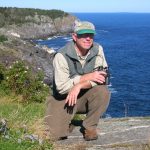Resources for Observers
 Welcome to Signs of the Seasons!
Welcome to Signs of the Seasons!
We invite you to become part of our citizen science project. Together, we are examining the impacts of climate change from ground zero: our own backyards, fields, and parks. This is a new era. Scientific advancement depends on citizen involvement. The mounds of data needed to advance our understanding of changing phenology cannot be gathered by scientists alone. Your input is essential! Join us for hands-on training. Check this page for information on sessions in Maine and New Hampshire. Educators, we welcome you to bring Signs of the Seasons and citizen science directly into your classrooms.
Volunteers, you’ll need a few tools to get started and keep going throughout the seasons. Here, you’ll find what you need to record your observations and better understand the species you choose to follow.
- Field Guide: Our training and field observation guide shows you how to set up your observation program. It includes detailed information on recording data and additional resources to help you get started. Please contact us for a copy or view it online.
- Nature’s Notebook Tutorial: Take advantage of the video below, Nature’s Notebook How-to Registration, on how to set up and edit your Nature’s Notebook account! This Youtube video will go through how to create an account, submit observations, print datasheets, and make any edits to the species you’re observing.
- Data Sheets for Field Observation and Data Entry: The Nature’s Notebook online database is hosted by USA-National Phenology Network. This is where Signs of the Seasons volunteers record their observations. These carefully organized sheets provide you with all the necessary information to successfully record what you see. Datasheets can be downloaded from the Nature’s Notebook site.
- Phenophase definitions: Get detailed information on the animals and plants you have chosen.
- Coastal Observers can access information specific to rockweed.
- Important Climate News: Check Maine’s Climate Future Report for important updates on phenology and climate.
News for Observers

Fall tips for bird observation: Seth Benz, director of the Bird Ecology Lab at the Schoodic Education and Research Center of Acadia National Park, discusses the importance of bird observation as the seasons turn. He says detailed information on fall behaviors can help scientists puzzle out the effects of climate change on different species. Benz notes that while animal numbers and locations are crucial, bird diet is also of great interest. See his tips here.

Observing plants in fall: Professor Lois Stack of UMaine offers Signs of the Seasons volunteers helpful pointers as we move into fall, a season of dramatic change that offers many opportunities to see phenology in action. In fact, detailing changes to plant life is every bit as crucial now as in the spring. See her tips here.
Phenology Webinars
Year-end summary: What happened in 2015? (Recorded October 5, 2015): Learn what your 2015 observations reveal, and the ways scientists are using your observations. We cover results from the 2015 Campaigns, as well as a range of other results from observers across the country. Webinar Recording | Powerpoint Slides
The new USA-NPN Visualization Tool (Recorded Jul 14, 2015): Curious to see how your observations compare to those in your region? How about to previous years? Does the timing of phenological events in your region seem to be driven by temperature, precipitation, daylength, latitude, or elevation? You can explore all of these patterns and more in the new USA-NPN data visualization tool! Webinar Video
How are your data being used? (Recorded Jun 16, 2015): The ways in which data collected through Nature’s Notebook are being used is growing nearly by the day. Join us as we walk through a range of real-world applications for these observations, including research, agriculture, resource management, and leaf-peeping. Webinar Video | Powerpoint Slides
